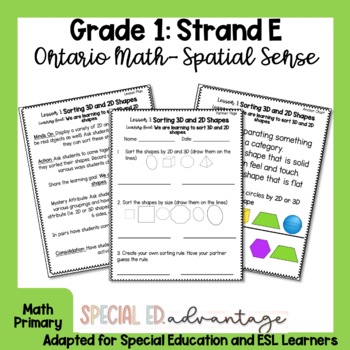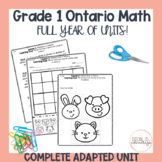Grade 1 Ontario Math FULL Spatial Unit created with Special Education in mind
- PDF
Also included in
- This is a FULL year of units adapted for students on the autism spectrum, ESL students or general special education classes. *There is a link on the PDF to a Google Drive version to use with your hybrid students*Each Unit Includes:1- Baseline Data2- Lesson Plans3- Anchor Charts4- Partner Activities5Price $39.95Original Price $46.35Save $6.40
Description
This is a full differentiated unit for 2020 Grade 1 Math: Strand E (Spatial Sense). It was created for students with special needs and ESL students in mind, however all students will benefit from this!
*There is a link on the PDF to a Google Drive version to use with your hybrid students*
Includes:
1- Baseline Data
2- Lesson Plans
3- Anchor Charts
4- Partner Activities
5- Individual Activities
6- Assessments (Conversation, Observation, Product)
7- Rubrics
I can't wait for you to use this unit with your students!
I am in the process of making all the math bundles, so stay tuned for more!
Follow me on socials if you'd like to connect
Instagram: @specialed.advantage
Other Math Resources: Algebra Worksheets for Grade 1
Follow me on TPT for more resources!!
Fab @ Special Ed Advantage





